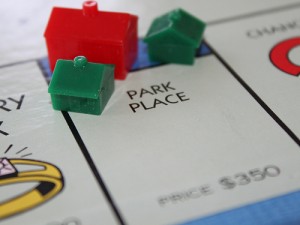Strategies For Buying and Financing Investment Properties
 As it has become harder to get qualified for conventional loans, it may be worthwhile for investors to consider buying properties that are not classified as one-family. A lot of small commercial banks will underwrite properties that are 2 family and higher and/or mixed use apartment buildings more easily than conventional banks.
As it has become harder to get qualified for conventional loans, it may be worthwhile for investors to consider buying properties that are not classified as one-family. A lot of small commercial banks will underwrite properties that are 2 family and higher and/or mixed use apartment buildings more easily than conventional banks.
While underwriting a conventional loan, that then gets sold Fannie Mae or Freddie Mac, most banks look beyond the cash flow of the property being purchased. They also scrutinize the full income and expenses of the individual owner. If you are an investor, it is highly likely that you have multiple properties and conventional underwriting gives you credit only for 75% of the investment rental income, before they deduct expenses related to that property. In addition, they look for a Schedule E or other proof of actual rental income for the past several years. They also look at the borrower’s other sources of income such as salary, self-employment, interest and dividend income and qualify based on all the income and expenses. They will deny the loan if your housing expenses are above a certain percent of your income, generally, about 28% all your expenses, called the “front ratio” and all your liabilities, including housing expenses are in excess of 33% of all you income, called the “back ratio.” For investors this process can sometimes stretch to several months as the banks come back for more and more paperwork and letters of explanation.
A commercial bank, on the hand, will keep the loan on it own books and not sell it Fannie Mae or Freddie Mac or the secondary market. It will review credit and income; however, it will underwrite the investment on a Debt Service Ratio (“DSR”) basis. Your credit score is still relevant, but the cash flow for the property being financed is more relevant. As an example, it your annual rental income on a property is $12,500 and your annual expenses, including taxes, insurance, upkeep, etc., plus the payments on the loan are $10,000 per month, your DSR is 1.25. Most commercial banks will calculate the repayment on a 25 year amortization schedule and approve only a 5 year fixed loan, which will balloon in 5 years, there are banks, that will use a DSR as low as 1.15, go as high as a 30 year amortization with a five year initial term, with a five year renewal, based on an pre-determined index and margin. They will generally also have a pre-payment penalty built into the loan.
This is a great way to qualify for investors in multi-family residential and commercial loans.
Pan Am Mortgage works with numerous lenders in both residential and commercial mortgage space and we will re-qualify you before you take the time to look for the right property.
photo credit: Park Place Expensive Real Estate Monopoly via photopin (license)

